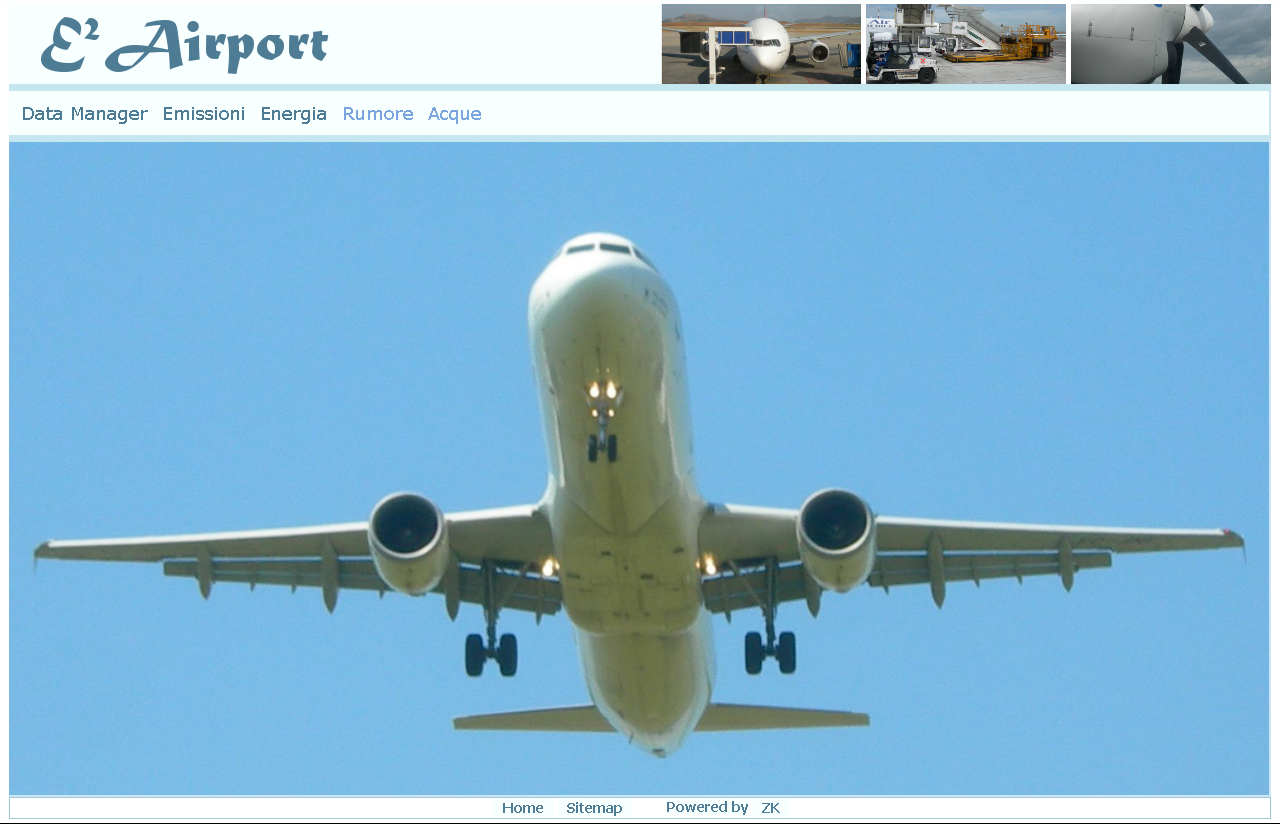E2Airport - Model for the evaluation of energy consumptions and emissions from air transport
 E2Airport is a comprehensive model to assess the aviation consumption and environmental impacts at the airport and in flight. In particular the following are evaluated:
E2Airport is a comprehensive model to assess the aviation consumption and environmental impacts at the airport and in flight. In particular the following are evaluated:
• Air pollutants emissions at the airport
• Energy consumptions and carbon dioxide emissions at the airport
• Air pollutants emissions in fly from airport to airport
• Fuel consumption and emissions of carbon dioxide in fly from airport to airport
• Airport noise
• Energy consumption and air pollutants emissions from ground support equipments
• Air and water emissions from other airport facilities (boilers, incinerators, scrubbers, etc.)
At present the features have been developed for energy consumptions and air pollutants and greenhouse gases emissions (shown in bold in the above list). In this context, the model incorporates the previous AirAir model dedicated to air pollutants emissions.
E2Airport estimates energy consumptions and major air pollutants (sulfur oxides, nitrogen oxides, volatile organic compounds excluding methane, carbon monoxide, suspended particles) and carbon dioxide emissions from the handling of aircraft at the airport from the
LTO cycles. LTO . The model also estimates emissions from abrasion of tires, brakes and asphalt runway.
E2Airport allows the introduction of the number of LTO cycles LTO by aircraft model and the specific times of the different phases of the airport under study (dependent on the size of the airport and traffic). The model calculates, through the data contained within the database, energy consumption and emission factors for each aircraft and LTO cycle LTO and consequently fuel consumption and emissions for aircraft model and total emissions.
E2Airport consists of an interface for data processing (typical times for classes of aircraft and number of LTO cycles LTO for aircraft model) and a database with all the data necessary for processing. The database is updated with the latest ICAO.




